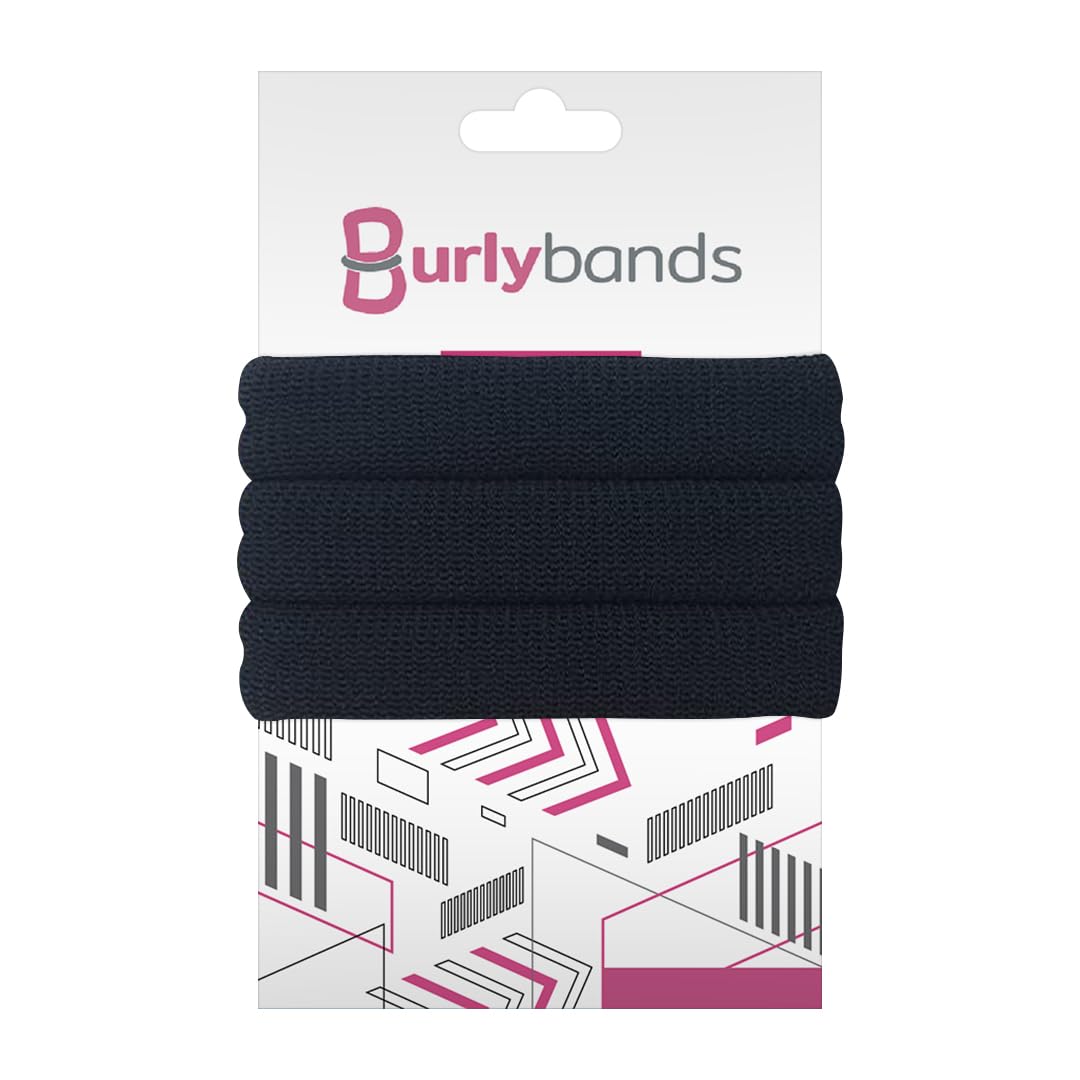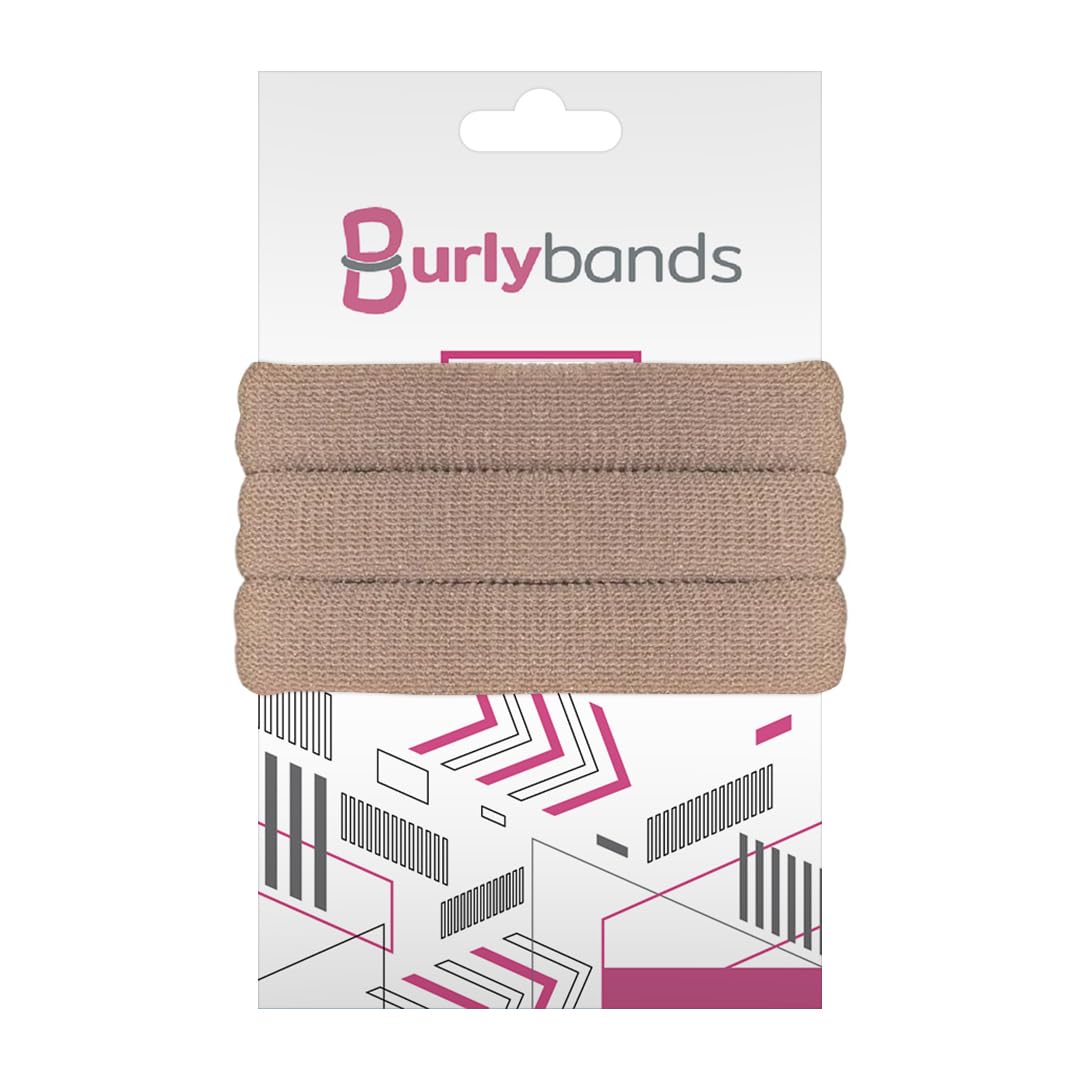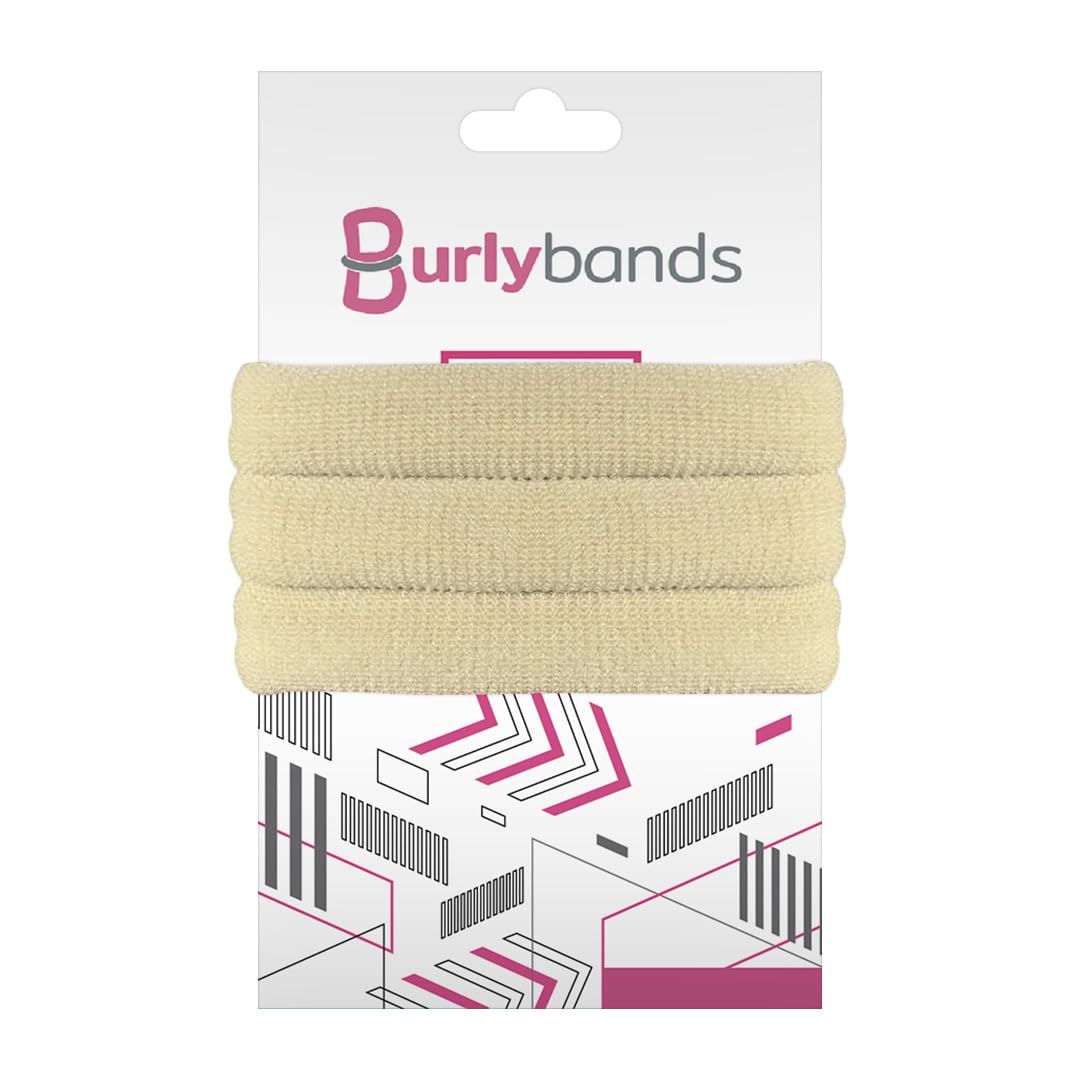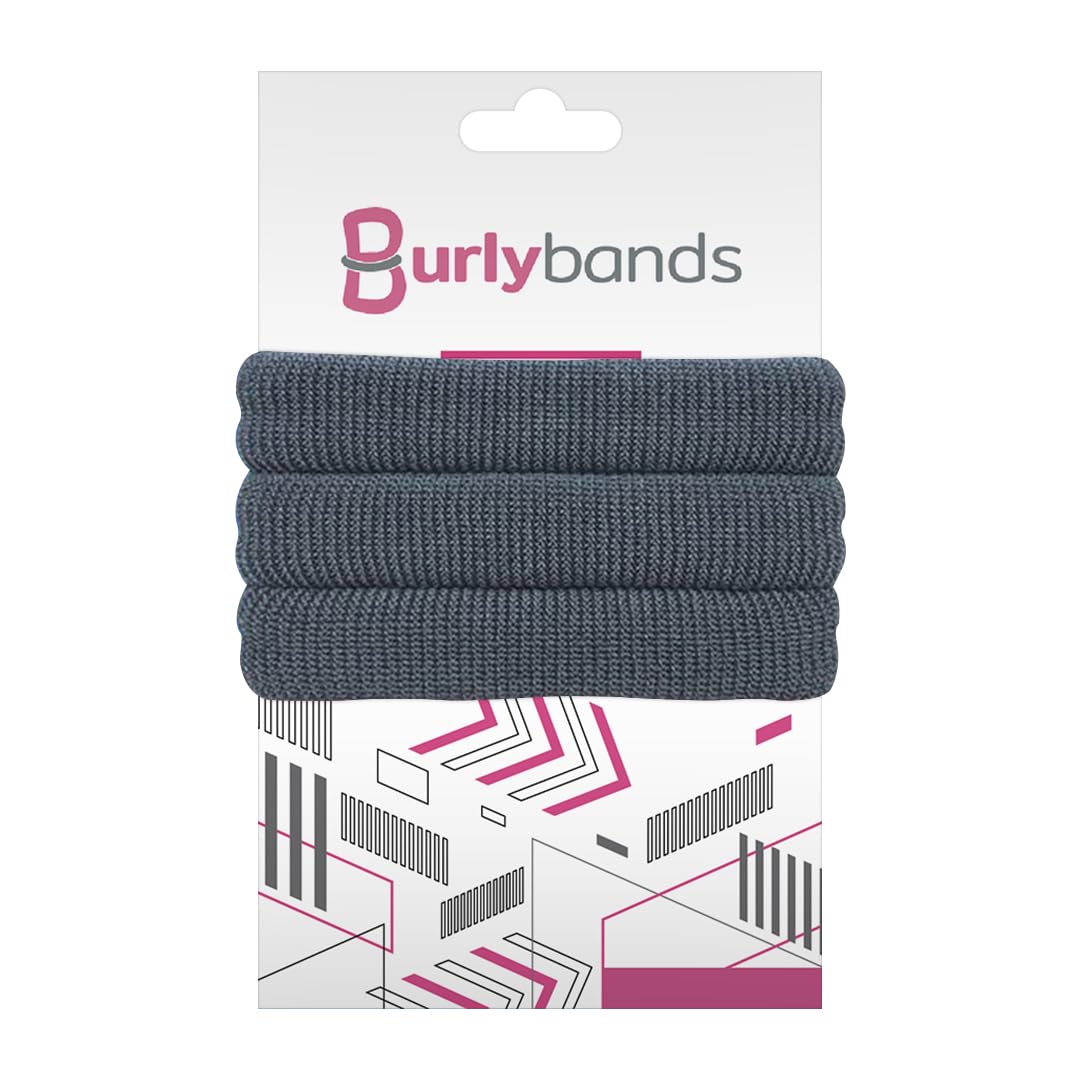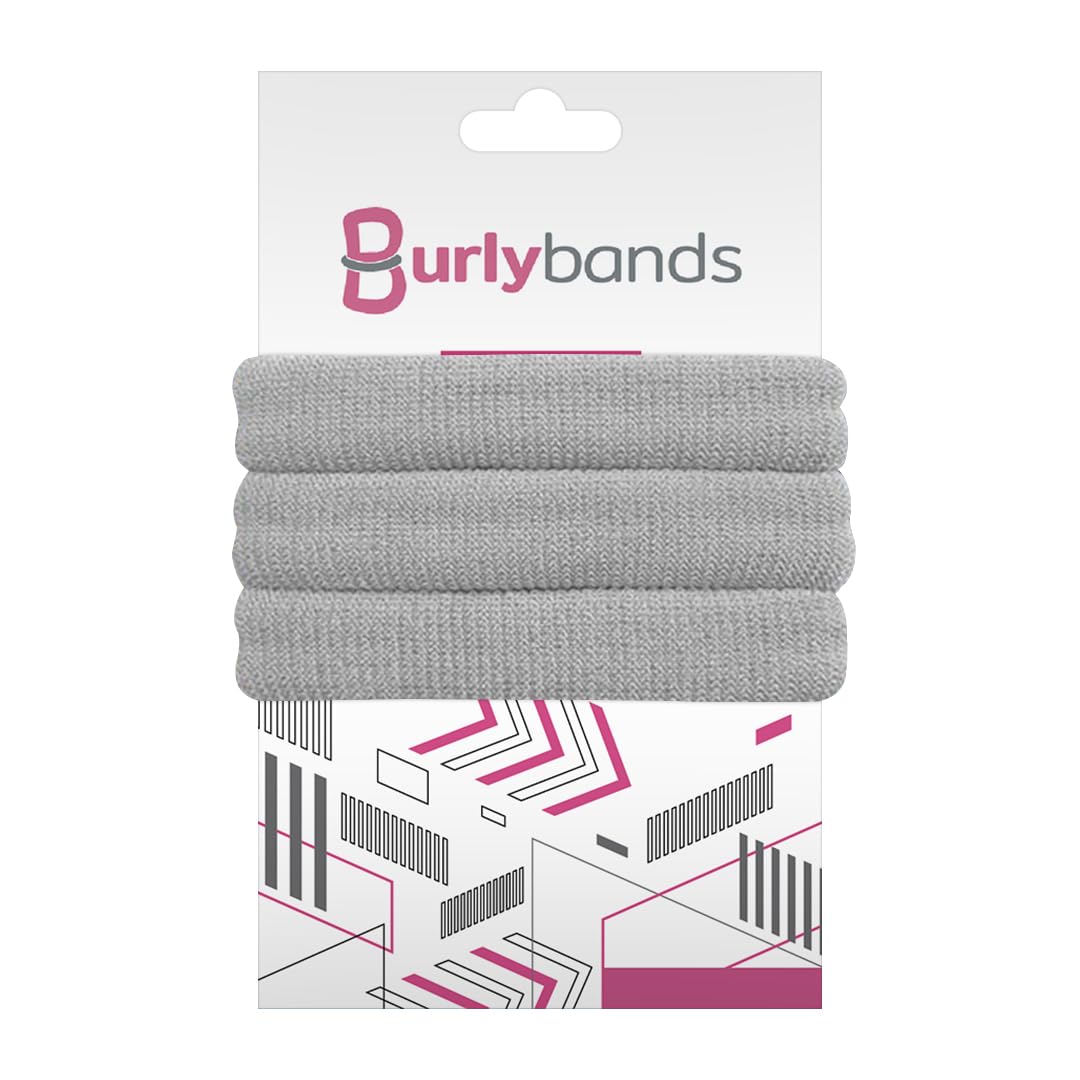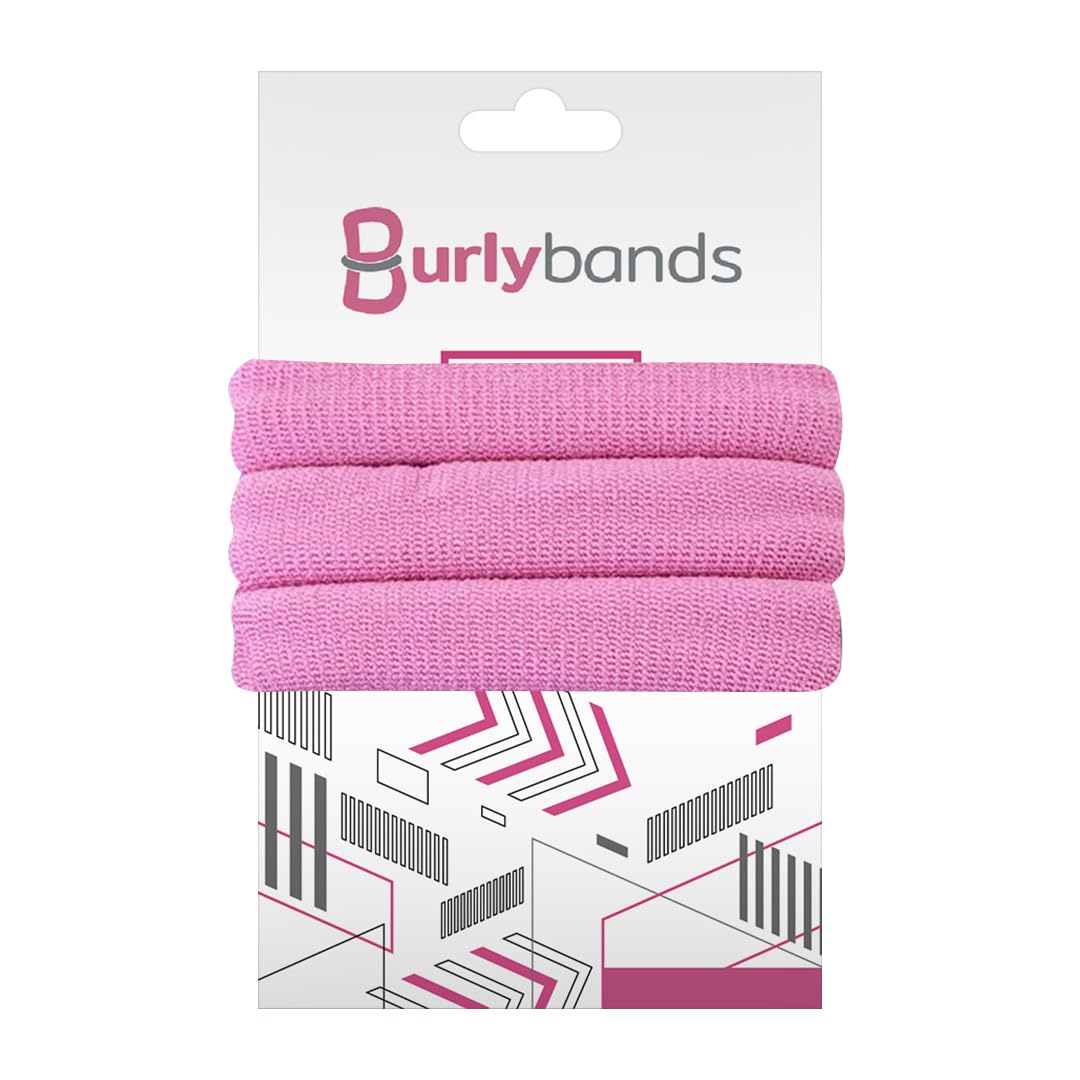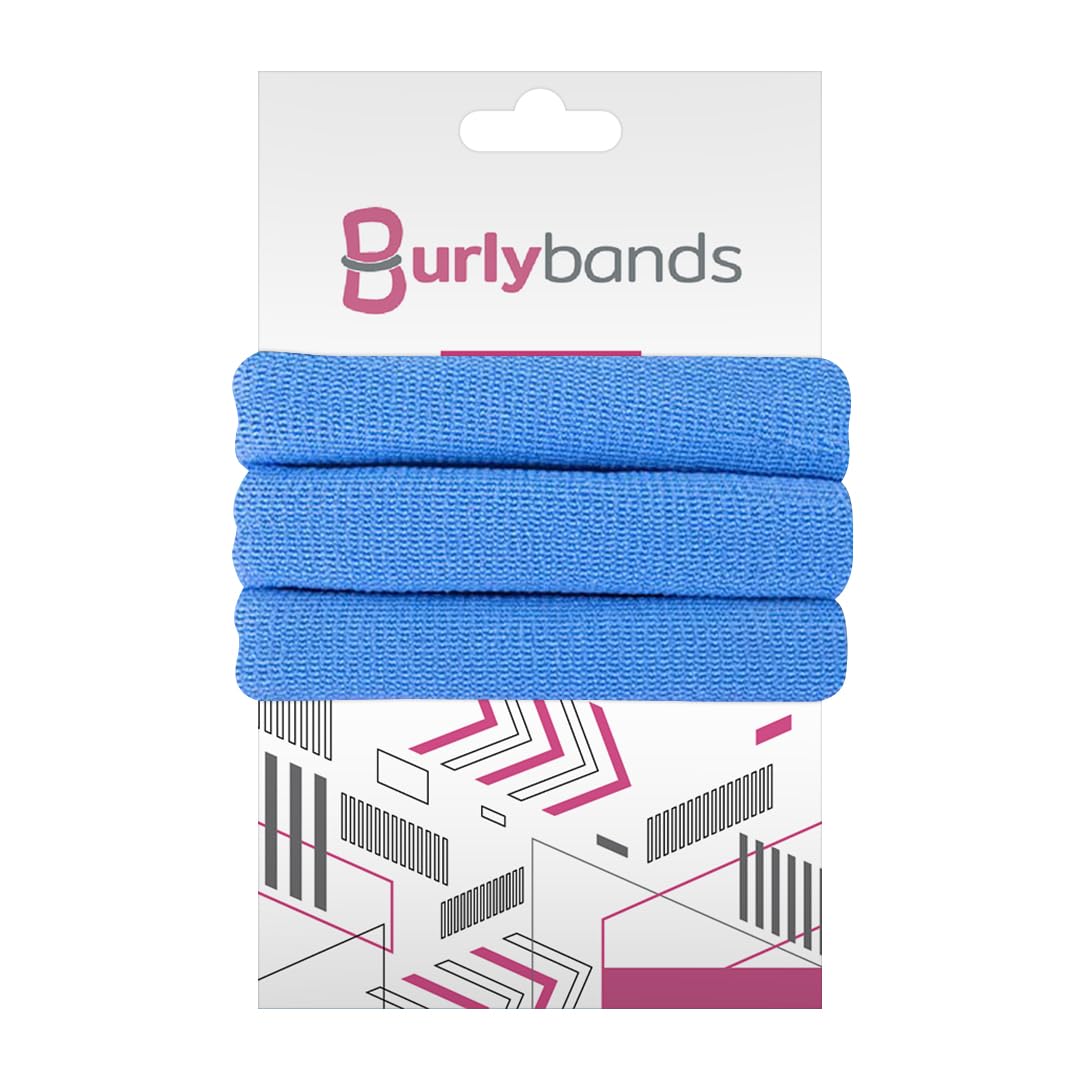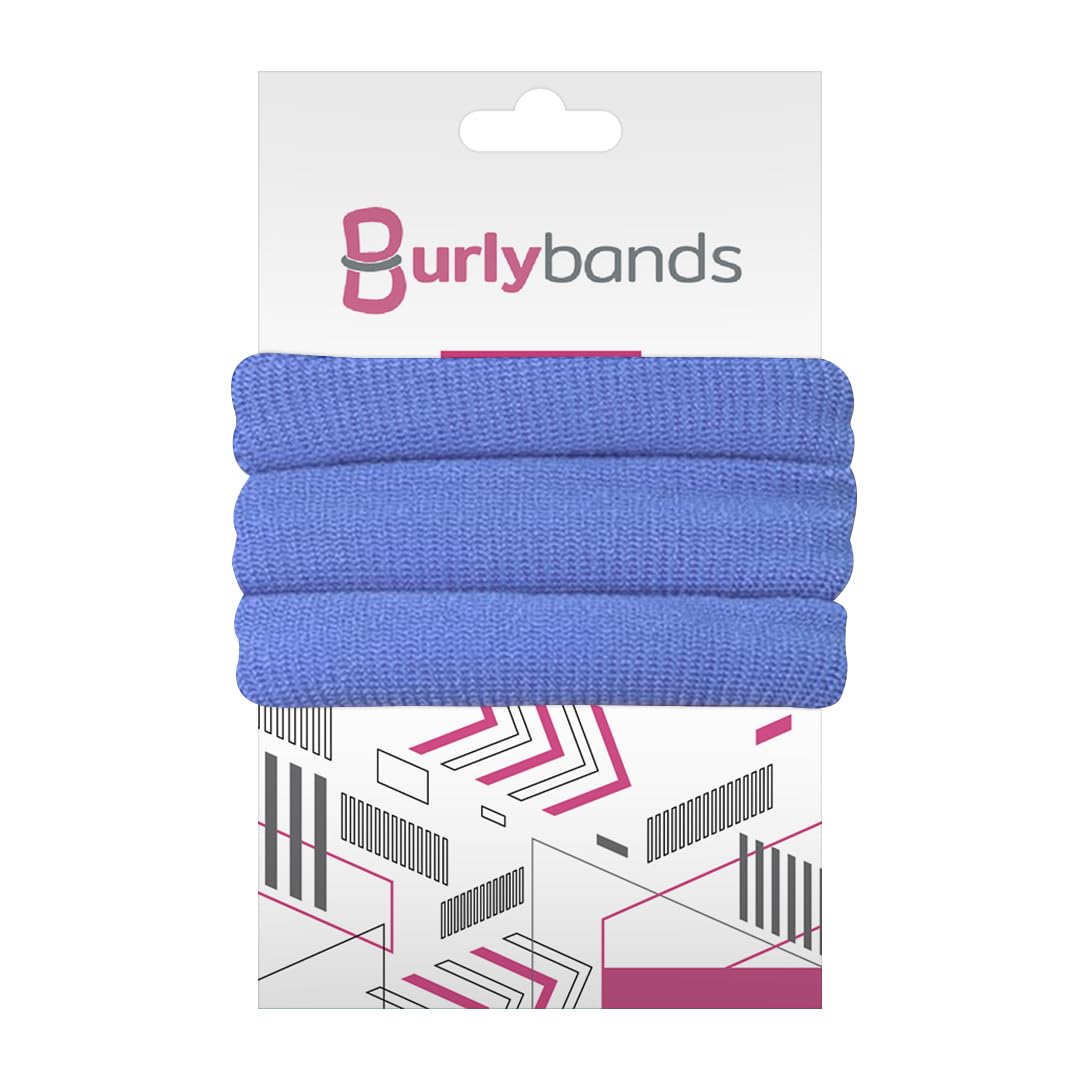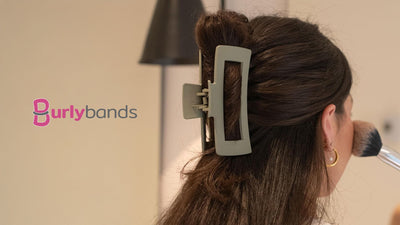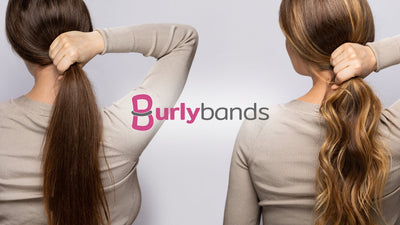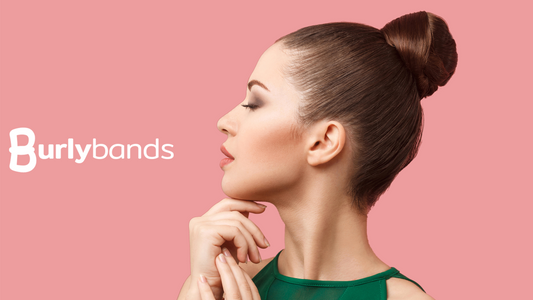If you're tired of constantly searching for the perfect hair ties that won't damage your hair or slip out of place, you're not alone! With so many options on the market, it can be overwhelming to choose the best hair ties for your specific hair texture.
But fear not, because, in this blog, we'll explore the different types of hair ties available and provide tips on how to choose the best ones for your hair type. Whether you have fine, thick, curly, or straight hair, finding the right hair ties can make all the difference in maintaining healthy and styled locks. So, let's dive in!
What Are Hair Ties?

Credit: Envato Elements/ Rawpixel
Before we dive into the specifics of choosing the right hair tie, let's start with the basics and understand what are hair ties.
Hair ties, also known as hair bands, are small, stretchy loops made from a variety of materials such as rubber, fabric, or silicone. Their primary function is to hold the hair in place, making it easier to create various hairstyles such as ponytails, braids, buns, or any other hairstyle that requires hair to be pulled back or in place. They come in different sizes, colors, and shapes to suit different hair types and styles. Some of them are designed to be gentle on hair to prevent damage, while others provide extra grip to keep hair in place during physical activities.
Types of Hair Ties

Credit: Envato Elements/ wirestock
Now that we know the basics of hair ties, let's take a closer look at the different types:
1) Hair Elastics
Hair elastics or elastic hair ties have consistently remained a favorite among hair accessories, and it's not hard to see why. Their versatility, affordability, and availability in a range of colors and sizes make them a go-to choice. The secret to their popularity lies in the stretchy materials, such as rubber or silicone, that they're made of. These materials provide a tight hold without adding bulk or causing hair to feel weighed down.
Additionally, their stretchy nature allows them to expand to accommodate different hairstyles, making them an all-around solution for workouts, outdoor activities, or long workdays. The best part about them is that they do all of this without causing discomfort or damaging hair.
2) Fabric Hair Ties
In recent years, the fabric hair tie, commonly known as a scrunchie, has gained a lot of popularity. Unlike traditional hair ties that are made of elastic or rubber materials, the scrunchie is made of soft, stretchy fabrics such as silk, cotton, or velvet. This unique construction offers several benefits for the wearer. For example, unlike most hair ties, this hair tie does not leave creases or cause breakage. Moreover, it is less likely to pull or tug on the hair, making it a more comfortable option for those with sensitive scalps.
Apart from its functional benefits, the scrunchie also comes in a wide range of colors and patterns, making it a fashionable accessory that can complement any outfit. It can be dressed up or down, depending on the occasion, and is perfect for adding a touch of style to a casual or formal look.
3) Spiral Hair Ties
Spiral hair ties, also known as telephone cord hair ties, are known for their unique design and functionality. This innovative hair accessory is designed with a spiral shape that provides several benefits to the user. One of the main advantages of this type of hair tie is its ability to hold hair securely without causing damage. Unlike traditional hair ties that can tug, pull, and break hair, a spiral hair tie gently wraps around the hair, preventing any discomfort or pain. It is also less likely to cause a crease or dent in the hair, making it ideal for those who want to maintain a smooth and polished hairstyle.
In addition to being gentle on hair, a spiral hair tie is also durable and long-lasting. Made of plastic or rubber, it is less likely to break or stretch out over time, making it a smart investment for those who frequently use hair ties. Furthermore, it is a great option to choose if you're looking for something versatile. It comes in a variety of colors and sizes, including transparent, making it suitable for all hairstyles from buns to ponytails to braids.
4) Bungee Hair Ties
A bungee hair tie, commonly referred to as a ponytail hook or hair bungee, is a hair accessory designed to secure hair. It consists of stretchy elastic material with two hooks on either end, providing a customizable fit for any size of ponytail or bun. One of its most unique features is its ability to hold the hair firmly in place without slipping or sliding, making it a perfect choice for people with heavy hair. Additionally, since it is available in a variety of colors and styles, it is easy to find one that matches your hair color and personal style.
5) Metal Hair Ties
Metal hair ties are a fantastic alternative to traditional hair ties. These hair ties are composed of metal and feature a clasp that securely fastens to your hair. Additionally, they are available in various sizes and designs, making them great to match different hairstyles.
One of the significant advantages of using metal hair ties is their exceptional strength and ability to withstand tension. With repeated use, traditional hair ties may snap or stretch out of shape, but metal hair ties can maintain their shape and hold for longer periods, making them a cost-effective option in the long run.
6) Ribbon Hair Ties
Ribbon hair ties are trendy hair ties, known for their delicate and smooth ribbon material that comes in a range of vibrant colors and patterns. Due to their softness and flexibility, they are a gentle option for hair, making them an excellent choice for individuals who want to avoid discomfort or hair damage from tight elastic bands.
However, it's important to note that ribbon hair ties may not offer the most secure hold compared to other types of hair ties. They have a tendency to slip or slide, particularly if you have thick or heavy hair or if you're engaging in high-intensity physical activity. This can be frustrating and may require frequent adjustments, which can be time-consuming and disruptive. Despite this, many people continue to choose ribbon hair ties due to their unique aesthetic appeal.
The Different Types of Hair Textures

Credit: Envato Elements/ Prostco-studio
Now that we have learned about the various types of hair ties, it's essential to discuss the different hair textures. Hair texture refers to the diameter of individual hair strands and can be classified into four main categories:
1) Straight Hair
Straight hair is characterized by hair strands that lie flat and have no visible curl or wave. This hair texture can be fine, medium, or thick and can range in length from short to long. Because sebum can easily travel down from the scalp to the hair shafts, straight hair tends to be shinier and more easily manageable than other hair types.
2) Wavy Hair
Wavy hair is characterized by hair strands that form loose S-shaped waves. This hair texture falls somewhere between straight and curly hair and can have a lot of body and volume. Additionally, it can be fine or coarse in texture and can range from shoulder-length to very long.
3) Curly Hair
Curly hair is characterized by hair strands that form tight or loose curls. It can range from loose, beachy waves to tight, springy coils. Additionally, this hair texture can be fine, medium, or coarse in texture and is often prone to frizz and dryness. Proper hair care and styling techniques can help to enhance curls and prevent damage.
4) Natural Hair
Natural hair is unique in its texture and can vary from coily to kinky to tightly curled. Compared to other hair types, this hair type is often denser and more delicate, requiring special attention and upkeep to maintain its health and strength.
Choosing the Best Hair Ties for Your Hair Texture

Credit: Envato Elements/ AveCalvar
Now that we know the basics of hair ties and hair texture, let's take a closer look at which ones are best suited for you:
Straight Hair: Elastic Hair Ties
If you have straight hair, an elastic hair tie is a great choice for you. It won't create bulk or weigh down your hair, and it provides a secure hold without slipping or sliding. Look for an elastic hair tie that is small and thin, as this will work best for your hair texture.
Wavy Hair: Fabric Hair Ties
If you have wavy hair, a fabric hair tie or a scrunchie is a great choice for you. This type of hair tie is gentle on hair and won't create a crease or cause breakage. Additionally, it also won't tug or pull on hair, which can be painful for those with a sensitive scalp. Look for a fabric hair tie that is medium-sized and has a little bit of stretch, as this will work best for your hair texture.
Curly Hair: Spiral or Bungee Hair Ties
If you have curly hair, a spiral or bungee hair tie is a great choice for you. Spiral hair ties won't create a crease or cause breakage, while bungee hair ties can be adjusted to fit any size ponytail or bun. Look for a spiral or bungee hair tie that is strong and durable, as this will work best for your hair texture.
Natural Hair: Metal Hair Ties
If you have thick, natural hair, a metal hair tie is a great choice for you. It can withstand a lot of tension and won't break or snap. It also provides a secure hold without slipping or sliding, which can be a problem for those with heavy hair. Look for a metal hair tie that has a clasp that opens and closes, as this will work best for your hair texture.
Tips for Using Hair Ties

Credit: Envato Elements/ SkloStudio
No matter which hair tie you choose, there are a few things to keep in mind when using them to prevent damage and keep your hair healthy:
1) Choose the Right Size
When selecting a hair tie, it's important to choose the right size for your hair. A hair tie that is too small will not hold your hair securely, while one that is too large may slip out. Generally, smaller hair ties are best for thinner hair, while larger hair ties are better for thicker hair. Additionally, if you have particularly long or heavy hair, you may want to opt for a thicker hair tie to ensure a secure hold.
2) Don’t Tie Your Hair Too Tightly
Tying your hair too tightly can result in hair breakage and damage to your hair follicles, leading to hair loss over time. If you experience any discomfort or tension while tying your hair, it is an indication that the hair tie is too tight. To reduce the pressure on your hair and scalp, loosen the hair tie slightly. Additionally, it is advisable to opt for a looser hairstyle, such as a messy bun or braid, to minimize the risk of hair damage.
3) Avoid Tying Wet Hair
Wet hair is more susceptible to breakage and damage, so it's best to avoid tying your hair when it's wet. If you need to tie your hair while it's wet, use a gentle hair tie and avoid pulling your hair too tightly.
4) Use Multiple Hair Ties for Thick Hair
If you have thick hair, it's best to use multiple hair ties to secure your hair in place. This helps to distribute the weight of your hair and reduces the likelihood of breakage. Additionally, secure your hair in sections, using one or two hair ties per section, rather than trying to tie all of your hair with one hair tie.
5) Change Your Hair Tie Regularly
Over time, hair ties can lose their elasticity and become stretched out. When this happens, they may not provide a secure hold, which can lead to breakage and damage to your hair. To prevent this, it is important to replace your hair ties regularly. As a general rule of thumb, you should replace your hair tie every few months, or sooner.
6) Be Gentle When Removing Hair Ties
When removing your hair tie, it is crucial to be gentle to prevent hair breakage or hair loss. Instead of pulling the hair tie out, gently unwind it from your hair to avoid any unnecessary tugging or pulling. This is particularly important if you have fine hair since this hair type tends to be more fragile.
How to Maintain Your Hair When Using Hair Ties

Credit: Envato Elements/ wayhomestudioo
To keep your hair healthy and prevent damage while using hair ties, it is essential to maintain your hair. Here are some tips to keep in mind:
1) Use a Hair Oil and Hair Serum
To minimize friction when using hair ties, it is advisable to apply hair oil or serum before tying your hair. However, it is crucial to choose a lightweight formula to avoid weighing down your hair or making it appear greasy. Heavy products can result in a buildup of oil and dirt, leading to hair damage and reduced manageability.
2) Use a Detangling Brush
Before tying your hair up, take a few minutes to work through any knots or tangles with a high-quality detangling brush. These brushes are designed to minimize discomfort while effectively smoothing out your hair. This step can make a significant difference in the health and appearance of your hair over time.
3) Get Regular Trims
Maintaining regular haircuts is essential for promoting healthy hair and preventing split ends, particularly when styling your hair with tied-up styles. Split ends occur when the hair shaft becomes damaged and splits, leading to weakened hair. Regular trims can help remove any split ends before they cause further damage, allowing your hair to grow stronger and longer.
4) Use a Leave-In Conditioner With UV Protection
Hair that is frequently tied up is more susceptible to damage, especially when exposed to external factors such as the sun's harmful UV rays. If you spend a lot of time outdoors, incorporating a leave-in conditioner with UV protection into your hair care routine is essential for maintaining healthy hair. A high-quality leave-in conditioner can help to shield your hair from the sun's damaging effects and provide nourishment and moisture to prevent breakage and brittleness.
5) Use the Right Shampoo
Frequent use of hair ties can weaken the hair strands over time. One of the best ways to counteract this is to use the right shampoo that suits your hair type and condition. A good shampoo can help to cleanse your hair and scalp and promote healthy growth. When selecting a shampoo, look for products that are specifically designed for your hair type and concerns, such as dryness and damage. This will ensure that you are using a formula that addresses your specific needs.
Stylish Hairstyles to Create with Hair Ties

Credit: Envato Elements/ leungchopan
If you're looking to add some variety to your go-to ponytail or bun, here are some hairstyles to experiment with:
1) Boho Braided Bun
For a bohemian or festival-inspired look, this relaxed and messy bun is the perfect hairstyle to try. To achieve this look, start by gathering your hair into a loose bun at the nape of your neck and securing it with a hair tie. Next, braid a few small sections of hair and wrap them around the base of the bun, securing them with bobby pins. For a more effortless look, pull out a few strands of hair around your face.
2) Waterfall Braid with a Low Ponytail
This beautiful and intricate style combines a waterfall braid with a low ponytail. To recreate this look, start by creating a waterfall braid on one side of your head, adding sections of hair as you go. Once you reach the nape of your neck, gather all of your hair into a low ponytail and secure it with a hair tie. For an added touch, wrap a small section of hair around the hair tie to hide it.
3) Low Double Buns
For a more subtle and refined look, consider trying a low version of double buns instead of the high version. To create this style, divide your hair into two sections at the nape of your neck and tie each section into a low ponytail. Twist each ponytail into a bun and secure it with a hair tie. To enhance the look, wrap a small section of hair around each bun and secure it with a bobby pin.
4) Braided Top Knot
For an added texture to your top knot, try a braided crown hairstyle. To create this style, start by dividing your hair into two sections at the front of your head and creating a Dutch braid with each section. As you reach the crown of your head, gather the remaining hair into a ponytail and twist it into a bun, securing it with another hair tie. Finally, wrap the braids around the base of the bun and secure them with bobby pins.
5) Braided Half-Up Half-Down
For a more intricate and sophisticated half-up half-down style, try a braided version. To create this style, start by dividing the top section of your hair into two equal parts and create a regular three-strand braid with each section. Next, tie the two braids together at the back of your head with a hair tie, leaving the rest of your hair loose.
6) French Twist with a Twist
For an elegant and sophisticated updo, consider trying a French twist hairstyle. To create this style, gather your hair at the nape of your neck and twist it upwards, securing it with a hair tie about two inches from the ends. Next, fold the twisted hair back down over the hair tie and secure it with bobby pins. For an added twist, create a small bun at the bottom of the twist with the remaining hair and secure it with another hair tie.
Summary
Maintaining healthy, lustrous hair requires more than just a good hair care routine. It also involves selecting the appropriate hair accessories, such as the right hair tie. We hope that this blog has been helpful in guiding you to select the best hair tie for your hair type.
If you're on the lookout for a hair tie that can hold your hair without causing any harm or breakage, then you'll love Burlybands. With Burlybands, you can finally say goodbye to the discomfort and frustration of traditional hair ties. Our premium-quality hair ties are made from a unique blend of materials that are gentle on your hair, so you can wear them confidently all day long. Shop with us today.
 Log in
Log in


